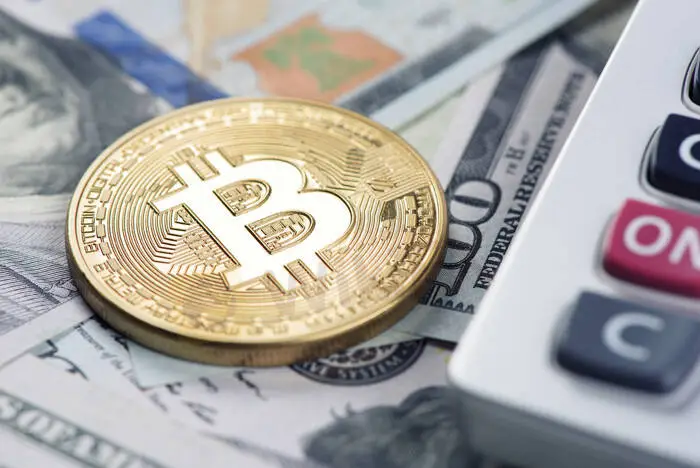简体中文
繁體中文
English
Pусский
日本語
ภาษาไทย
Tiếng Việt
Bahasa Indonesia
Español
हिन्दी
Filippiiniläinen
Français
Deutsch
Português
Türkçe
한국어
العربية
Florida to go Ahead and Receive State Fees in Crypto
Abstract:U.S crypto adoption continues within a number of U.S states. The White House could impact wider adoption, however, with an imminent Executive Action.

The U.S continues to grab the crypto news headlines as crypto friendly states push cryptocurrency adoption. At the turn of the year, however, the push comes amidst heightened regulatory scrutiny.
Crypto Friendly States, Mayors, and CityCoins
Theres been plenty of news coverage on U.S politicians and cryptos in recent months. At the start of the year, New York City Mayor Eric Adams confirmed that he would take his first 3 pay checks in Bitcoin (BTC). Former cop Adams had touted the idea before taking office. Later in the month, Adams took his first pay check amidst an extended crypto sell-off that saw Bitcoin tumble by more than 50% from its November ATH $68,979.
Eric Adams joined Miami City Mayor Suarez and Tampa Mayor Jane Castor, both of whom also had announced last year that they would take Bitcoin salaries.
In the U.S, the Cities of Miami and New York are among the more advanced when it comes to cryptos. Back in June 2021 the City of Miami launched its very own MiamiCoin, which became the first CityCoins to market.
CityCoins provides citizens a medium to generate crypto-based revenue. Powered by Stacks (STX), CityCoins enables smart contracts on the Bitcoin network. CityCoin miners receive CityCoins token rewards by depositing STX into smart contracts. 70% of all STX tokens deposited into the smart contract go to the stackers.
The remaining 30% goes to City Wallets. City Wallets are considered a crypto equivalent of a citys treasury. Mayors can exchange the accrued tokens for fiat to invest in the city. Alternatively, mayors can mine with the accrued STX tokens to earn Bitcoin.
Following Miami City was New York City that then launched its very own NewYork Coin (NYC Coin).
Regulatory Scrutiny a Test for Pro-Crypto Politicians
While Miami and New York are crypto friendly, lawmakers on Capitol Hill have a different position on cryptos and crypto mining.
Last month, a U.S Congress subcommittee hearing focused on Bitcoin (BTC) mining and the environment. Lawmakers held a negative view on Proof-of-Work (PoW) mining, Bitcoin and the environmental impact. While the hearing was a fact-finding mission, the general view was that Proof-of-Stake was a better solution. Since the hearing, a recent paper by CoinShares questioned Bitcoin the accuracy of mining statistics shared during the hearing.
Following the hearing, the White House then announced the imminent release of an Executive Order tasking agencies with the regulation of cryptos as a matter of national security.
Heightened regulatory scrutiny has been a factor in Bitcoin and the broader crypto markets sell-off since late November. More downside could result should there be a material shift in the crypto regulatory landscape. A number of regulators from around the world, including the Bank of England, have called for a global regulatory framework.
In spite of recent crypto market volatility, U.S politicians continue to forge ahead on their crypto goals.
Florida to Receive State Fees in Crypto
Late in the week, Florida Governor Ron DeSantis reportedly continued his support of Florida businesses being permitted to pay state fees in crypto. The Governor had proposed a program to let businesses pay state fees in digital currencies late last year.
According to the news piece, DeSantis highlighted that South Florida has seen an inflow of people due to the States crypto friendly stance.
With Miami City paving the way and Florida Governor DeSantis in favor of crypto adoption, success of the program may well hinge on the White House and its aspirations vis-à-vis crypto regulation and adoption. Punitive regulatory activity could force businesses to steer clear of cryptos near-term. A more pragmatic approach to regulate cryptos, however, could see more U.S states support crypto adoption.

Disclaimer:
The views in this article only represent the author's personal views, and do not constitute investment advice on this platform. This platform does not guarantee the accuracy, completeness and timeliness of the information in the article, and will not be liable for any loss caused by the use of or reliance on the information in the article.
Read more

Will the Euro and US Dollar Reach Parity in 2025?
Euro-dollar parity sparks debate again as 2025 approaches, with multiple factors shaping the exchange rate outlook.

US Dollar Surge Dominates Forex Market
The global forex market continues to show volatility, with the U.S. dollar fluctuating last week but overall maintaining a strong upward trend. How long can this momentum last?

Oil Prices Soar for 5 Days: How Long Will It Last?
Last week, the global oil market saw a strong performance, with Brent crude and WTI crude prices rising by 2.4% and around 5% respectively. Oil prices have now posted five consecutive days of gains. But how long can this rally last?

How Big is the Impact of the USD-JPY Rate Gap on the Yen?
The U.S. Federal Reserve's repeated rate cuts and the narrowing of the U.S.-Japan interest rate differential are now in sight. So, why is the U.S.-Japan interest rate differential so important for the yen’s safe-haven appeal, especially when global economic uncertainty rises?
WikiFX Broker
Latest News
High-Potential Investments: Top 10 Stocks to Watch in 2025
US Dollar Insights: Key FX Trends You Need to Know
Why Is Nvidia Making Headlines Everywhere Today?
Discover How Your Trading Personality Shapes Success
FINRA Charges UBS $1.1 Million for a Decade of False Trade Confirmations
Bitcoin in 2025: The Opportunities and Challenges Ahead
BI Apprehends Japanese Scam Leader in Manila
Big News! UK 30-Year Bond Yields Soar to 25-Year High!
SQUARED FINANCIAL: Your Friend or Foe?
Join the Event & Level Up Your Forex Journey
Currency Calculator






